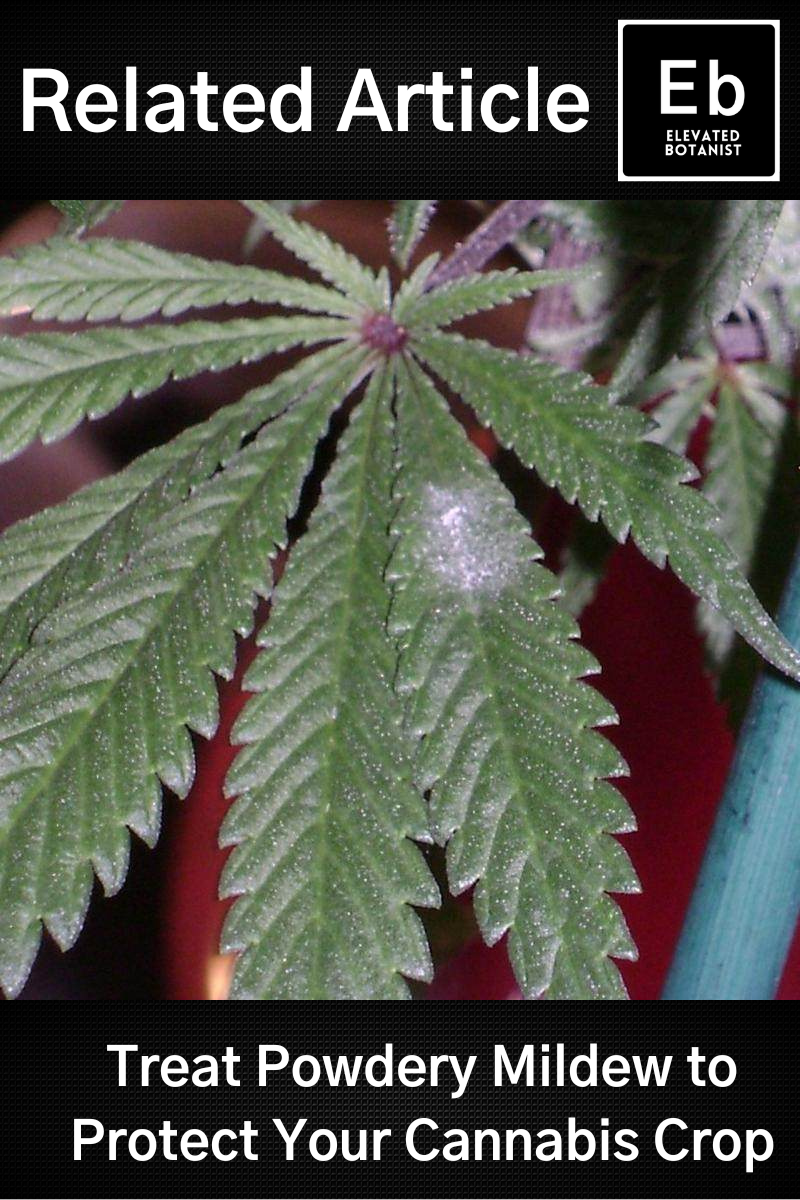Shape Your Plants for Profit
Many cannabis growers seem nostalgic for the nineteen-seventies and prefer an untrimmed bush.
But an even canopy is not just a beautiful thing to behold.
Plant structure in horticulture systems has important impacts on quality and yield.
Efficient canopy management involves influencing plant signaling systems to shape them for commercial production.
Plasticity
Plants are sessile organisms.
They are rooted in place and unable to relocate if things don’t work out.
For this reason, plants have evolved the ability to radically change their physical form based on environmental signals.
This ability is known as plasticity.
Two cannabis clones can be grown in different environments, and result in completely dissimilar plants.
Imagine that you are separated from your twin at birth, and when you meet up years later, she is ten feet taller than you are.
This is the degree of plasticity that plants are capable of when adapting their physical form.
Plants have evolved sophisticated systems of communication to enable this response.
We can influence these systems by applying environmental and mechanical pressures.
Hormone Regulation
Hormones are chemical signaling compounds that plants use to organize their physical form and to communicate with other organisms.
All plant cells can synthesize and exchange these simple bio chemicals, which inform all aspects of growth, including cell division and differentiation.
Without hormone regulation plants would consist of masses of undifferentiated cells.
Hormones move between cells through diffusion and translocate to other plant parts through xylem and phloem tissues.
The relative concentration of hormones in plant cells fluctuates continuously in response to environmental conditions. The cross-talk, or interactions between various hormone systems directs plant development in ways that are not completely understood.
Auxins
Auxins are a class of hormones with many important roles in plant morphology.
Auxins enable phototropism, or a plants ability to grow toward the light.
When a branch is bent horizontally, auxins will locate in higher concentrations on the shaded side of the branch.
This causes an elongation of plant cells, and bends the branch toward the light.
This effect is continuous and responsive, and enables leaves to track the solar path over the course of each day.
Auxins are primarily synthesized in upper shoots and transported to roots, where cell division and lateral root development is promoted.
Cytokinins
Cytokinins are a class of hormones which commonly interact with Auxins to guide plant morphology, or physical form.
Cytokinins generally favor lateral shoot growth and inhibit lateral root development.
These hormones are synthesized in roots and transported to shoots through the xylem and synthesized in shoots and transported to roots through phloem tissues.
Cytokinins contribute to many important root functions including nutrient signaling and uptake.
A simplified model of auxin-cytokinin interactions is demonstrated by in vitro propagation practices.
When plants are cultured in sterile media, addition of cytokinins promotes shoot formation, while addition of auxins promotes formation of roots.
When both hormones are present and balanced, both shoot and root development occurs.
Other hormones including Ethylene, and Gibberellins also play an important role in plant structure.
Apical Dominance
Apical Dominance refers to the extent to which a plant will grow with an upright habit. This feature has evolved to enable competition for sunlight with other plants.
A cannabis plant that exhibits high apical dominance will naturally develop a Christmas tree shape.
This characteristic is genetically inherited and directed by hormone regulation. Auxins are produced most profusely in the shoot apex of the plant, or the parts closest to the light.
This inhibits the growth of lateral buds farther down the stem.
Removal of the shoot apex will result in a hormone shift in the Auxin-Cytokinin ratio that promotes lateral branch development. This is known as topping a plant.
Topping a plant will result in a temporary reduction of auxins transported to the roots, and a slowing of lateral root development.
Root Development
Many of these hormone messaging features are mirrored in the upside down.
Auxins generally promote cell elongation in shoots and inhibit elongation in roots.
In the absence of light, gravitropism provides a guide for plants to direct roots downward and shoots upward.
Specialized gravity-sensing cells within plant organs enable a lateral gradient in auxin levels in plant tissues relative to their proximity to the center of the earth.
Brassinosteroids are a class of hormones with a feature role in gravitropic signaling.
Root development also responds to light through negative phototropism or the direction of growth away from light.
As with foliar growth, these root development features can be manipulated for higher performance in commercial grow systems.
Energy Balance
The concept of energy balance should always be considered for timing of pruning and transplant activities.
A plant’s energy balance refers to the cycle of production, storage, and use of assimilates during a plant’s various growth stages.
These assimilates are carbohydrates that are acquired through photosynthesis, and which fuel plant growth.
Assimilates are continuously synthesized during the photoperiod and are consumed through the generation of biomass.
Plants regulate the use of assimilates to fuel biomass growth and to ensure that adequate reserves are maintained for rainy days.
A well rooted plant will quickly recover from removal of foliage.
Plants with verdant foliar development will have a positive energy balance and can quickly root into new media.
Training small plants
Early interventions can have a big impact on a plant’s future productivity with minimal labor input.
Cannabis plants are usually asexually propagated and transplanted during various stages of development.
Intensive training techniques like topping can be very effective but result in a temporary slowing of plant development.
Young plants can be grown at high density where the opportunity cost of this reduced growth is minimal.
Low-stress training (LST) techniques can be efficiently applied to small plants. LST usually involves bending plants so that upper shoots are at a similar height as lowers. This changes hormone ratios and lowers apical dominance without stressing the plant.
Significant structural changes can result from simply bending a small plant and securing a fan leaf to its container with a clothespin.
Root training pots are designed to guide root tips to holes in the pot where they are air-pruned. This benefits development of a fibrous root structure by encouraging development of radial roots through hormone signaling.
A well-crafted root system enables small plants to take off when transplanted.
Canopy Management
When plants arrive at their flowering location their form should be well-established, with apical dominance distributed between 4 and 8 main branches at similar heights.
Most cultivation facilities will benefit from shaping plants to create an even canopy.
This enables a consistent availability of light, hormones, and other resources across the crop. Penetration of light to all flowering sites is required to produce quality cannabis flowers.
Supercropping can be a good way to manage plant height.
This technique involves physical compression of vascular tissues in stems by squeezing a branch between a thumb and forefinger.
This reduces auxin transport to lower branches, slows vertical growth above the compression, and promotes lateral branching.
There are additional plant health benefits to canopy management.
Removal of lower foliage promotes airflow through the crop which helps to eliminate microclimates and boost photosynthesis.
Pruning for airflow also benefits pest management by disrupting stagnant air and allowing Sulfur and spray treatments to contact all crop surfaces.
Steering Plant Structure
Many cultural practices contribute to shaping plants. An initial dry-back following transplant will encourage roots to expand rapidly through the growing media in search of water.
Lighting intensity and quality also effect plant structure.
A blue shifted spectrum encourages compact growth. Under low light conditions, plants can become etiolated, or stretchy.
The grow climate can also be managed to limit stretching.
DIF is a measure of the difference between the highest and lowest temperature over a 24-hour period.
Cannabis plants that experience a low or negative DIF will exhibit more compact growth.
Negative DIF can be difficult to achieve, and in many cases can limit photosynthetic efficiency due to the lower daytime temperatures required.
Fortunately, it is possible to achieve the plant structure benefits of a negative DIF by reducing temperatures during the first couple of hours of the photoperiod, before returning to a more photosynthetically efficient temperature for the rest of the day.
Trellising
Trellis is often installed in flowering canopies to aid in branch positioning and support.
Use of 6x6 plastic trellis netting is ubiquitous in the cannabis industry. This material is not cheap, and it can last forever, so smart growers should develop systems to reuse this resource for several crop cycles. This is not a trivial challenge.
In addition to crop support, trellising can provide a structure for plant training. To this purpose, the first tier of trellis should be stretched taut.
As plants grow through the trellis, branches can be positioned to keep shoot apexes at a similar height and to fill any gaps in the canopy. Tomato clips provide an efficient way to position branches and affix them to the trellis.
Legacy growers refer to this use of a horizontal trellis for canopy equalization as Screen Of Green or ScrOG.
A second tier of trellis is commonly draped over the canopy following flower initiation and significant defoliation.
Defoliation
We are not in the business of growing beautiful leaves.
Flower development is enhanced by direct exposure to light.
Routine defoliation to increase light penetration is a sound practice across many crops. Cannabis is not different in this regard.
Schwazzing is a technique that involves removing most of a plant’s leaves at about two weeks into flower. This can increase yields, but is very labor intensive, and stressful for the crop.
Regular removal of fan leaves throughout the crop cycle is more efficient for commercial growers.







